The effect I'm after: Having spacing between images that is only visible while scrolling (like the photos app).
A lot of old obj-c answers suggest extending the scroll view's bounds offscreen to make it page farther, and making this offscreen space the gap between images.
The documentation for pagingEnabled states:
If the value of this property is YES, the scroll view stops on multiples of the scroll view’s bounds when the user scrolls.
So in trying to change the multiples value, I extended the scrollView's width, and left paging enabled. Yet no answers I implement page past the gap - they always leave it in view:
So if the scroll width is longer, why isn't it paging the proper distance?
let gapMargin = CGFloat(20)
scrollView.frame = CGRect(x: 0, y: 0, width: view.frame.width + gapMargin, height: view.frame.height)
let exdScrollWidth = scrollView.frame.width
//1
let imageView1 = UIImageView()
imageView1.backgroundColor = UIColor.green
imageView1.frame = CGRect(x: 0, y: 0, width: exdScrollWidth - gapMargin, height: scrollView.bounds.size.height)
//2
let imageView2 = UIImageView()
imageView2.backgroundColor = UIColor.yellow
imageView2.frame = CGRect(x: exdScrollWidth, y: 0, width: exdScrollWidth - gapMargin, height: scrollView.bounds.size.height)
//3
let imageView3 = UIImageView()
imageView3.backgroundColor = UIColor.red
imageView3.frame = CGRect(x: exdScrollWidth * 2, y: 0, width: exdScrollWidth - gapMargin, height: scrollView.bounds.size.height)
scrollView.contentSize.width = exdScrollWidth * 3
scrollView.addSubview(imageView1)
scrollView.addSubview(imageView2)
scrollView.addSubview(imageView3)

